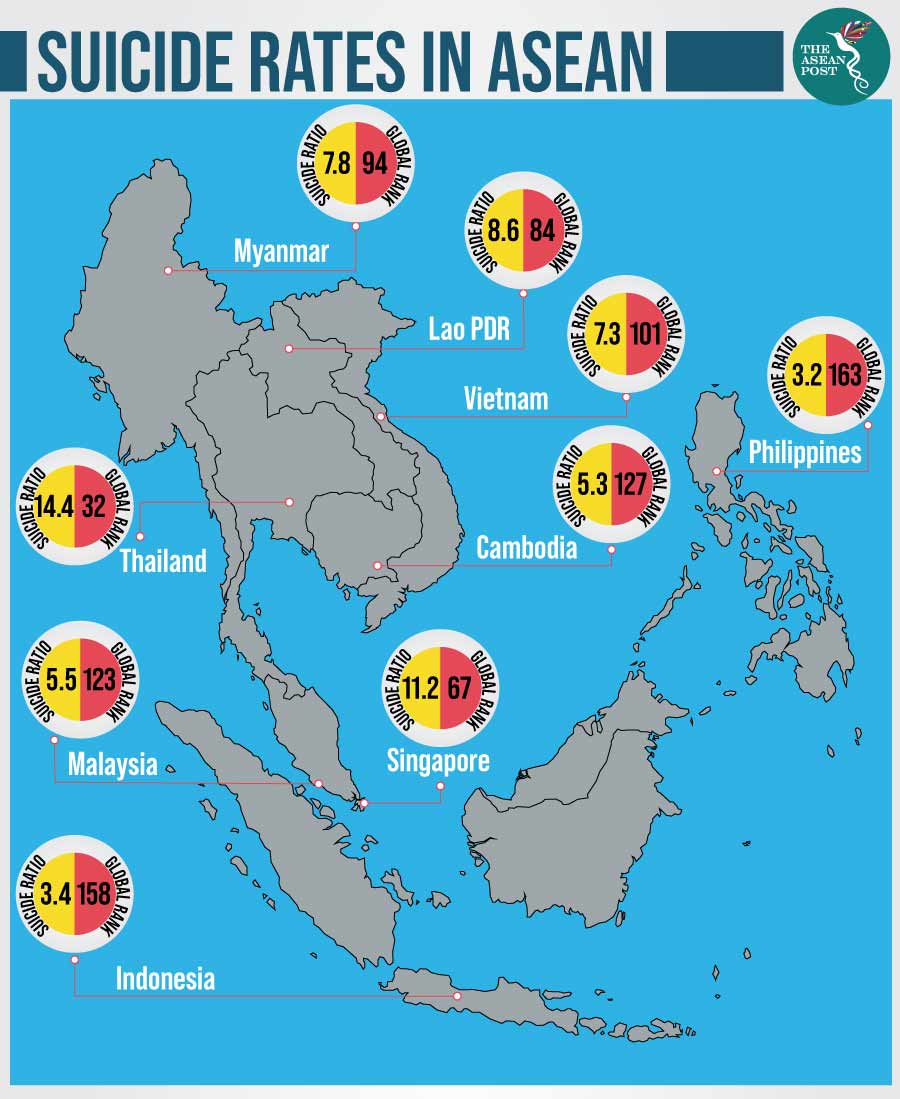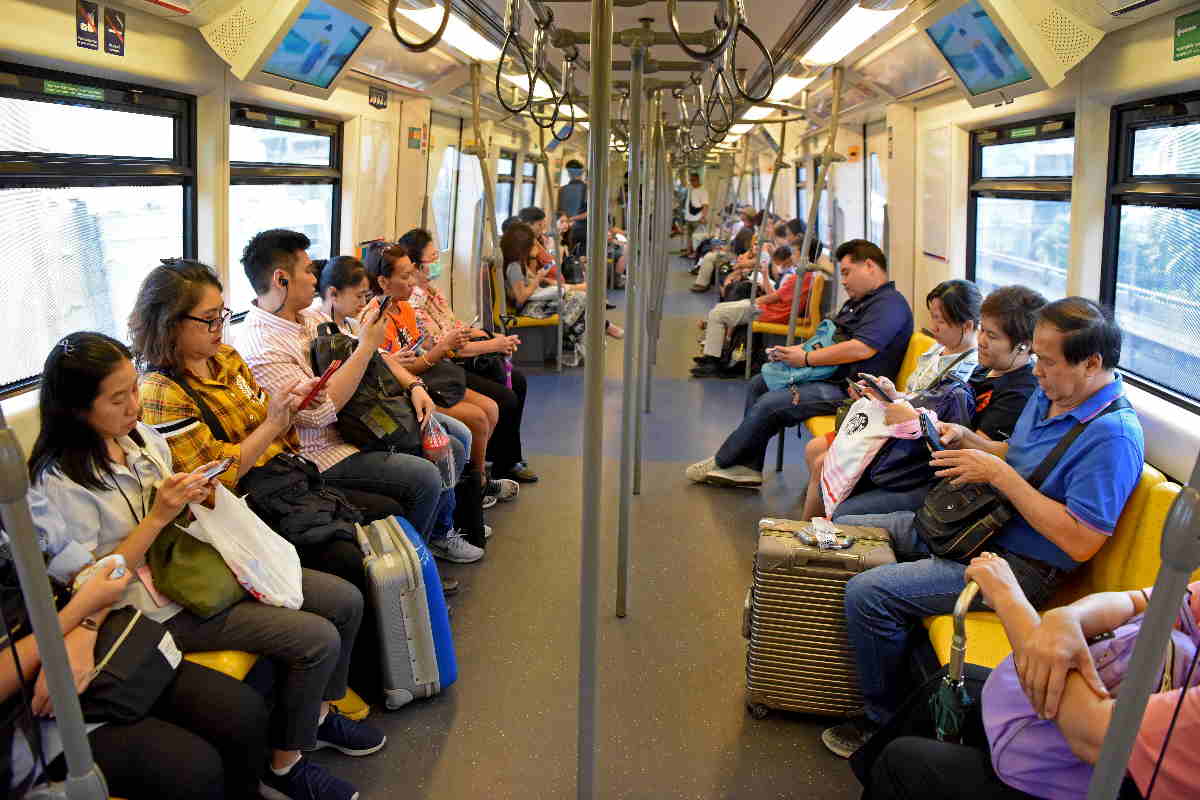Thailand may be called the “Land of Smiles” but a recent study by the World Health Organization (WHO) shows that this may be far from the truth. According to the study, Thailand leads ASEAN for number of suicides.
The WHO has ranked Thailand 32nd in its annual suicide rate report, with a 14.4-suicide ratio for every 100,000 population, or equivalent to 10,000 deaths by suicide per year. This was followed by Singapore, ranked 67th with a ratio of 11.2, and Lao in 84th spot with a ratio of 8.6. Myanmar, on the other hand, was ranked 94th with a ratio of 7.8, while Vietnam was ranked 101st with a ratio of 7.3. Malaysia was in 123rd spot with a ratio of 5.5, Cambodia at 127th with a ratio of 5.3, and Indonesia was 158th with a 3.4 rate. The Philippines, meanwhile, has the lowest suicide ratio of 3.2, and is ranked 163rd, while Brunei was not on the list.
In July, Thailand’s Department of Mental Health said that statistically speaking, every hour, six people in the country attempts suicide. This translates to 53,000 people every year attempting suicide which has resulted in 4,000 people dying by their own hands.
The department’s director-general, Kiattiphum Wongrajit, was quoted in the local media as saying that the rate of attempted suicides rose to 6.11 people per hour last year compared to 6.03 people in the previous year (2017). Of this number, the rate among men is four times higher than women, while the most vulnerable group is men aged between 35-36.
The most vulnerable females are those between 50-54 years, he added.
Kiattiphum added that mental health disorders such as depression, failed relationships, and substance abuse are often the main factors driving people to take their own lives.
He said those who have attempted suicide before may need professional help. People who suffer from anxiety or depression are at risk as well and should consult with professionals to help them deal with suicidal thoughts and feelings.

Land of tears
In 2016, Somrak Chuwanichawong from Bangkok’s Srithanya Hospital, a psychiatric facility, presented her research on depression, suicide and public health in Thailand. She noted that the increased number of suicides in recent years could be attributed to personal depression.
Speaking to local media, Somrak said that depression can have many causes, but when combined with mental imbalances, can lead to suicide when left untreated. Unfortunately, in Thailand, (as of 2016) there is only one licensed psychiatrist for every 250,000 people. In Thai culture, it’s not common to seek therapy unless the symptoms of mental illness are apparent. Conservative Thais generally have a bad perception of people who go for therapy.
Somrak also noted that the highest suicide rate was recorded in the country’s North. She believes that it may be related to Northern traits of holding on to stress and not sharing problems with others. Meanwhile, the Central and North-eastern regions have not experienced a spike in cases. The fewest reported cases was in the South. She noted that, in Central Thailand and Isaan, issues related to money are the biggest reasons for stress and depression.
Kiattiphum has urged for more public awareness about suicide and how to deal with suicidal people, saying vulnerable groups include people with serious financial problems, those who have experienced a sudden loss of someone close to them, people experiencing chronic insomnia, those with bipolar problems and those with a history of attempted suicide.
The WHO celebrates World Suicide Prevention Day on 10 September every year since 2003 to raise public awareness of suicide around the world and what people can do to help prevent it. On 10 September, the WHO, in collaboration with global partners, also launched a “40 seconds of action” campaign, which will culminate on World Mental Health Day on 10 October. This year’s theme is suicide prevention.
The “40 seconds of action” campaign gives an opportunity for people to help improve awareness of the significance of suicide as a global public health problem; improve knowledge of what can be done to prevent suicide; reduce the stigma associated with suicide; and let people who are struggling know that they are not alone.
The WHO has also urged people to share their messages, photos, illustrations and videos that are not of a private nature on Twitter or Instagram using the hashtag #40seconds and #WorldMentalHealthDay.
Related articles:
